ONARCHITECTURE- Busy building: The year in review
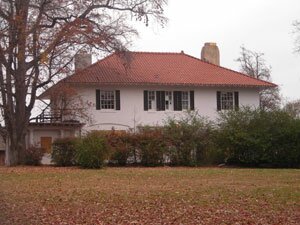
Going down: To make room for a new $21 million headquarters, the Jefferson Scholars Foundation recently applied for a demo permit to take down Beta House, one of many local landmarks earmarked for the wrecking ball.
FILE PHOTO BY DAVE MCNAIR
Of course, the big story in the built environment this year has been how many places are up for sale. What started as a lull in the real estate market earlier this year gradually moved into free fall. By October, 1,494 houses were listed for sale in the area, nearly a 14.5-month supply, whereas supplies just three years ago averaged two or three months.
Also in October, local builder Randy Wade, who founded R.D. Wade Builders 42 years ago, decided to call it quits, saying, "We've taken a restrained approach to building for the last year and a half... we hoped things would get better over that time, but instead they've gotten worse."
But the slumping real estate market didn't keep the City from sponsoring a $150,000 international design competition for the Water Street parking lots, or funding the renovation of little McGuffey Park, or earmarking $7 million to spruce up the Downtown Mall in the near future. And it hasn't slowed Coran Capshaw's plans to develop the Coal Tower property, or Lee Danielson's plans to erect a nine-story hotel on the Mall.
No, the year was full of changes for our area. While it's nearly impossible to list all the topics and projects we covered in 2007, here are a few that stood out:
Wishful thinking on Water Street?
The year began with the City handing the Charlottesville Community Design Center $150,000 to manage an international design competition for the Water Street parking lots, even though most of the land is privately owned by the Charlottesville Parking Center Inc., a company begun as a consortium begun downtown business owners.
In October, after 63 entries were received from firms around the world, $25,000 in prize money was doled out to three winners for a building that will probably never exist on the property, estimated to be worth as much as $10 million. A Charlotte, North Carolina firm called "Little" took the $12,000 first-place jury prize, but local firm Little Rhino Studio was the people's choice winner. However, since potential developers of the property are not required to use the designs, it was likely all an exercise in make-believe.
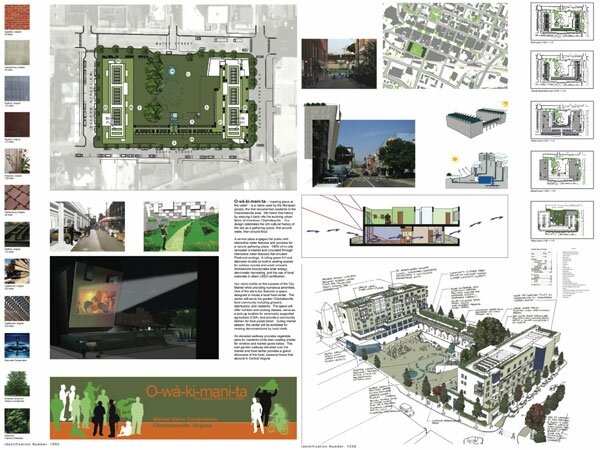
The People's Choice winner
PHOTO COURTESY CHARLOTTESVILLE COMMUNITY DESIGN CENTER
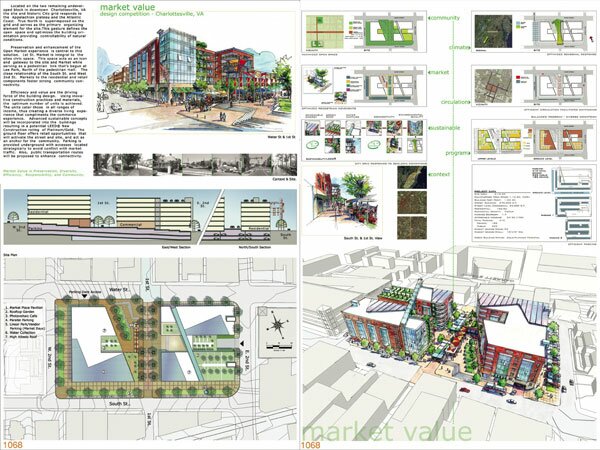
The winning design!
PHOTO COURTESY CHARLOTTESVILLE COMMUNITY DESIGN CENTER
Hotel Danielson
Developer Lee Danielson returned, this time to build a high-end "boutique" hotel at the site of the old Boxer/Central Fidelity building on the Downtown Mall. The hotel will be about twice the size of the Live Arts Building and about the same height as the nearby Wachovia tower. Designed by San Francisco-based architect Mark Hornberger, an old high school chum of Danielson's, the nine-story hotel will also feature an upscale bistro in the former banking lobby. When we spoke to Danielson's PR firm in March (apparently, he's not speaking to the press anymore), they told us construction would begin in the summer, and that the hotel would be completed in the Fall of 2008. However, that appears to have been some wishful thinking, as we haven't noticed much progress on the project. Calls to Danielson's PR firm were not immediately returned.
![]()
PHOTO COURTESY MARK HORNBERGER
Toilet brush of freedom
In April, Charlottesville resident Kevin Cox made Constitutional history (as far as we know) by being the first person to defend the First Amendment with a toilet brush. Fed up with the assorted graffiti and often objectionable language on the Downtown Mall's Free Speech chalkboard– at times obscuring the words of the First Amendment– Cox decided to erase the offending material with a toilet brush and a quart of water on his way to work.
"I love the idea of an interactive monument that teaches free speech," said Cox, "but this just isn't doing it. The reality is that the chalkboard is a silly graffiti board." Said Constitutional attorney John Whitehead of Cox's quest, "It's great that he disagrees. Guys with toilet brushes are what make America great."
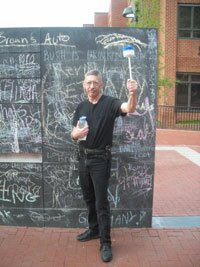
Kevin Cox
PHOTO BT DAVE MCNAIR
McGuffey Park
The City spent $400,000 and a group of private citizens raised another $279,000 to fund a fancy renovation of this little 1.1 acre downtown park. Merry-go-rounds and and tunnel slides were replaced by spicas and spinner bowls, a peculiar round basketball court was added, and the park now includes a "weeping water wall."
Some have called it an expensive "vanity" project for a select Downtown demographic and an unwise use of taxpayer dollars for a park that was just fine as it was. However, others applaud the private citizens who spearheaded the project, and say the park is now safer and more beautiful than before.
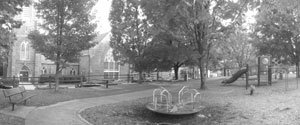
Before
FILE PHOTO BY HAWES SPENCER (note: use color photo)
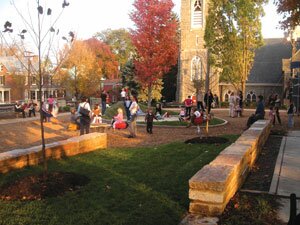
After
FILE PHOTO BY DAVE MCNAIR
The Green Monster returns
Earlier this year, it looked like plans for the so-called "Green Monster" at 201 Avon Street– a nine-story luxury green condominium building to be designed by New York-based green architecture pioneer Randy Croxton– was going to be scrapped, as Croxton and company had failed to submit a final site plan after seeing the project approved. However, on October 10, the day their approval was set to expire, Croxton delivered plans for a building designed to achieve a platinum rating under guidelines dictated by the Leadership in Energy and Environmental Design (LEED) green building rating system, a standard very few buildings in the country can meet. It will include gardens in the upper terraces and a rainwater collection system to provide water for irrigation and flushing toilets.
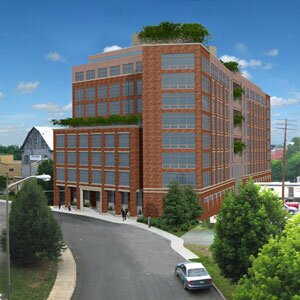
FILE PHOTO BY DAVE MCNAIR
Did C-Ville become G-ville?
It could be described as the Year of Going Green, as the Hook published its first-ever Green Building special issue to cover the growing trend. In fact, earlier in 2007, Country Home magazine named Charlottesville one of America's Top-10 best green places to live, citing our efforts to encourage the use of green roofs (our own County Office Building sports one), rainwater harvesting, porous paving, and rain gardens in parks and public spaces, as well as the value our community appears to put on trees, parks, greenspace, streams, and biodiversity. Indeed, when City Council adopted its 2025 "vision statement" last year, the creation of a Green City was one of the primary goals.

The Albemarle County Office Building's green roof.
PHOTO COURTESY ALBEMARLE COUNTY
The $20 million courthouse collapse
Almost two years after the north-east corner of the Juvenile & Domestic Relations Court building collapsed on March 30, 2006, not much has visibly changed at the jobsite, as the City, County, contractor (Kenbridge Construction), and various engineers have been trying to figure out whose fault it was and how to fix it. While City officials say the project is moving forward, the real battle will come when the bill's due. What began as a $12.4-million project has now become a $20-million project that won't be finished until January 2009.
"At some point, [Kenbridge] will present us with a bill," City attorney Craig Brown told the Hook over the summer. "...and we will decline to pay it. Then we'll have to take it from there."

FILE PHOTO BY DAVE MCNAIR
Going Down
Some well-known landmarks bit the dust in 2007, including 23 buildings at the old Blue Ridge Sanatorium site (UVA foundation), the Skyline Parkway Motor Court and other buildings on Afton Mountain (land owner Phil Dulaney), the old Airport Motel on 29 North (Walgreens), and the soon-to-be-demolished Beta House on Maury Avenue (Jefferson Scholars Foundation)... not to mention the old university residential neighborhood behind Cabell Hall that's been disappearing in the wake of the South Lawn project.
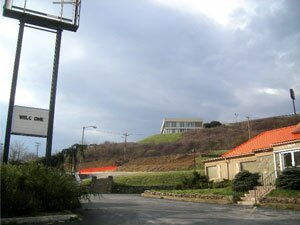
Afton mountain
FILE PHOTO BY HAWES SPENCER
All along the Coal Tower
On August 14, the site plan for Coran Capshaw's 10.656-acre coal tower development went before the Planning Commission. Only a stone's throw away from the east end of the Downtown Mall and extending practically all the way to Meade Avenue from near the Belmont Bridge, the development– almost 100,000 square feet of commercial/retail space and several buildings, some as high as nine stories– is one of the biggest city developments the Commission has seen. But the City Planning Commission, the Board of Architectural Review, and City Council may have little control over what gets built there: the the coal tower project is a "by-right" development that allows Capshaw to move forward simply by following city code.
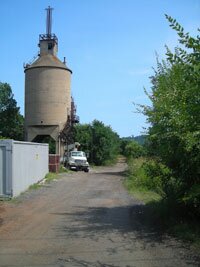
FILE PHOTO BY DAVE MCNAIR
#